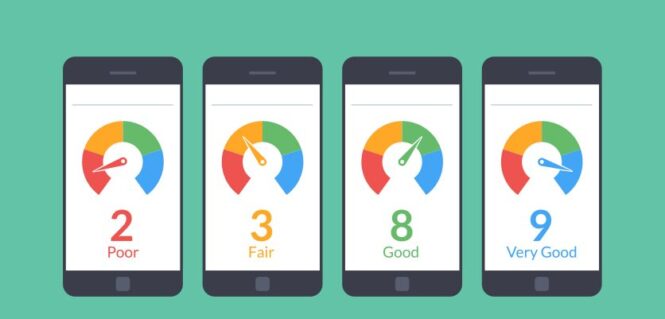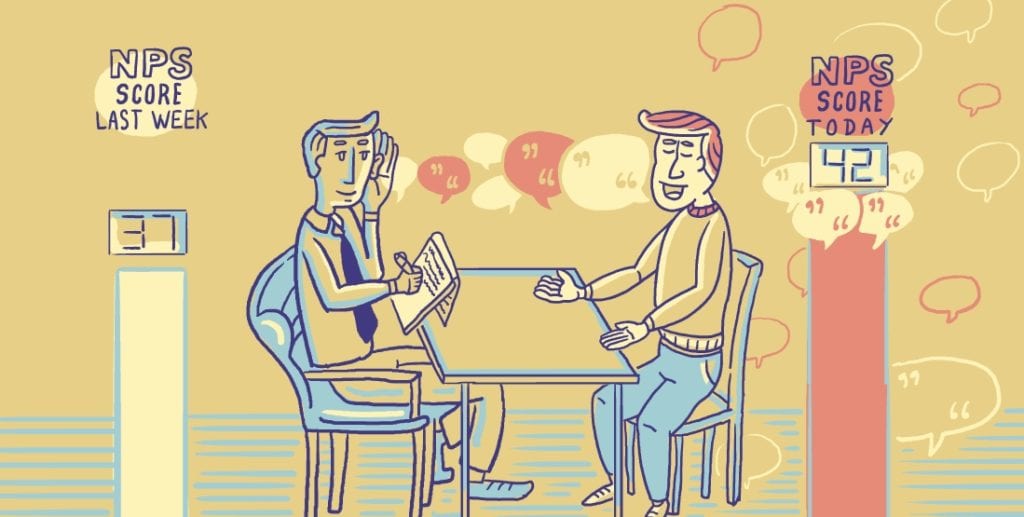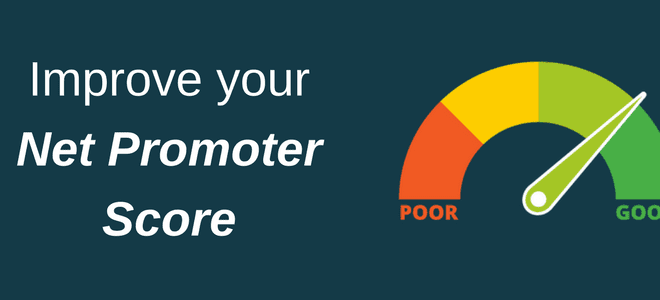Customers are the backbone of businesses. When they are happy and satisfied, companies witness growth and development, when they are unhappy and dissatisfied, companies are most likely to go to rack and ruin. So, if you want to ensure the continuous growth of your business, you must rely on methods to provide delightful experiences to customers. But, how do you measure it? Is there a tool or way that can help you evaluate customer satisfaction scale?
The answer is an astounding yes. Net Promoter Score (NPS) can help companies’ measure customer satisfaction and loyalty, which will help them improve their market standing. In this blog post, you’ll find what NPS is and how organizations can increase their NPS score.
Net Promoter Score Explained

According to Adeptia a Chicago-based software company, Net Promoter Score (NPS) is an important metric that helps companies evaluate customer satisfaction and loyalty. This score can be calculated by asking a single question, “How likely are you to recommend our product to a friend or colleague?”. The question is answered by choosing a number on a scale of 0 to 10. On the basis of answers, the respondents are categorized into 3 groups:
Promoters: Customers who answered either 9 or 10. Promoters are the customers who are happy and satisfied with the brand or product. These customers are the potential brand advocates and loyalists.
Passives: Customers who answered either 7 or 8. Passives are the customers who are neutral about the brand. These customers are not loyal enthusiasts of the brand.
Detractors: Customers who answered between 0 and 6. Detractors are the customers who are not happy with the brand and can provide a negative word-of-mouth. The negative reviews posted by them can do more harm than having less number of promoters.
The final score is calculated by subtracting promoters with detractors. This score is a measurement of how satisfied and loyal your customers are.
All About a “Good” Net Promoter Score

For businesses using the NPS metric to measure customer satisfaction and loyalty, knowing what encompasses a “good NPS” is extremely important. As per a CustomerGauge’s report, the average NPS is 44.
With that being said, it’s important to note that the Net Promoter Score varies by industry. For example, in the retail industry, the average NPS is 56. This number, when it comes to telecommunications, drops to 27.
However, one should not assume that if they are in an industry with a low average, they should settle for a low score.
In truth, these numbers can play an elementary role in helping businesses get an idea of where their business stands in comparison to their competitors. Plus, they serve as the benchmark that companies must work toward if they fall behind.
Perks of NPS

Net Promoter Score is clearly becoming numero uno choice for companies when it comes to choosing a scale to measure firms’ success. It is effective, detailed, simple, and accurate. With this scale in place, companies can provide a number of benefits such as:
Easy to Use
NPS surveys are very plain and simple. These surveys include a few precise questions, lowering the burden on customers. Also, the measuring scale (0 to 10) is very easy to comprehend, and companies do not need the assistance of qualified personnel to interpret the score. It does not include any complex indices or correlation coefficients to boot.
Net Promoter Score is also easy to track; it can be tracked every week or every month. So, not only NPS is easier to calculate but also simpler to track.
Improve Customer Satisfaction and Loyalty
Organizations can use this metric to evaluate how satisfied their customers are. They can use the score to measure customer loyalty to boot. When the majority of customers are happy, companies can accelerate sales and ultimately revenue.
Increase Advocates
When customers are loyal, they are more likely to become loyal brand advocates. Brand advocates inspire other customers through word-of-mouth recommendations. NPS can help companies get a clear idea of how to improve the number of their advocates.
Control Churn and Drive Growth
By evaluating customer satisfaction and loyalty, companies can control churn. They can do so by understanding their customer needs better, whether the brand or service offered needs any improvement or not. This, as a result, not only helps companies meet customer demands but also enhance the brand quality, making them easier to do business with.
Further, enterprises can use NPS survey results to resolve issues, streamline the decision-making process, and dramatically reduce costs. In case, the results are not good or the score is low, companies can employ various methods to increase it further for growth and innovation.
How to Improve NPS

For those who want to know how to improve the NPS score, here are some strategies. You can make use of these strategies to increase NPS score.
- Ignoring your promoters is a huge mistake one can ever make. Organizations can use promoters to gather valuable insights about your brand or product. Promoters can help you identify your loopholes as well. By attaining this information, you can understand what are the strengths and weaknesses of your brand.
- Companies need to engage with their detractors and passives to know why aren’t they interested or happy with the brand. The information gathered from them can be used to improve the experience. And, organizations can make changes in the product or service accordingly.
- Being unresponsive to your customers can be the worst thing you can do. Communication plays a significant role in making your relationship with customers better. Asking for feedback is important. Questions like “what can we do to improve our product or brand” or “what do you appreciate or detest” can help you understand your customers better.
- Technological solutions such as data integration platforms and self-service solutions can help you improve your NPS. Organizations can employ these solutions to establish an integrated environment that thrives on communication and transparency. As a result, you can offer compelling experiences to customers that help you become easier to do business with.
- Complacency is a major source of obstruction when it comes to improving Net Promoter Score. One needs to monitor the score in order to maintain a constant development.
 Imagup General Magazine 2024
Imagup General Magazine 2024



